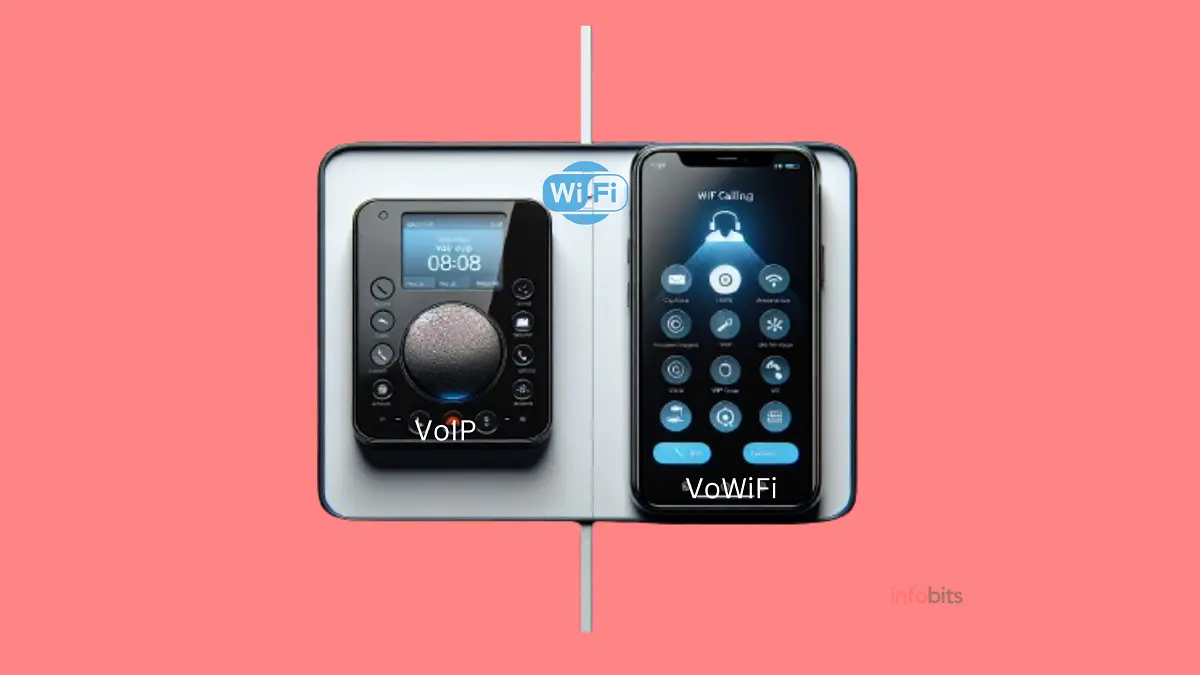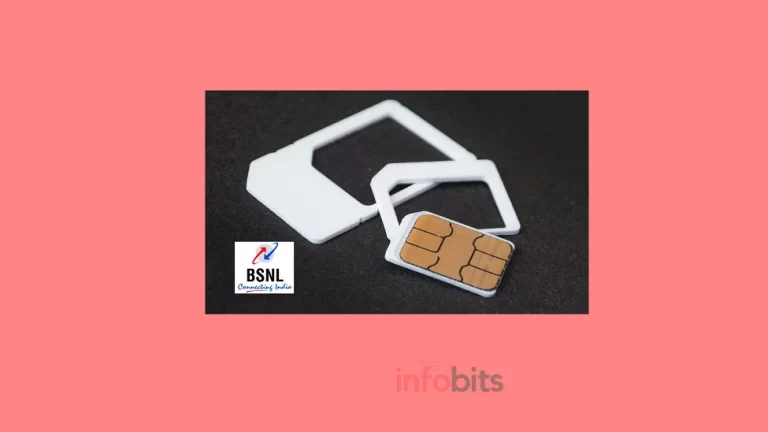VoIP vs WiFi Calling: Understanding the Key Differences
Telecommunications technology has advanced substantially over the last several decades, bringing a plethora of innovative ways to communicate across distances.
Among these developments, Voice over Internet Protocol (VoIP) and WiFi calling are popular alternatives for both consumers and companies.
While both services use internet connectivity to support audio communication, they work on distinct principles and are designed to meet different purposes.
Understanding the differences between VoIP and WiFi calling can help people better assess their communication methods.
The article examines the definitions, workings, and significant distinctions of VoIP vs WiFi calling, giving light on how to select the best solution for your needs.
Exploring VoIP and WiFi Calling
Definition of VoIP
Voice over Internet Protocol (VoIP) is a technology that enables users to make voice calls using a broadband Internet connection rather than a traditional (or analogue) telephone line.
It works by transforming vocal impulses into digital data packets and sending them across the internet. VoIP may be utilized on various devices, including smartphones, PCs, VoIP phones, and others that support VoIP software.
It is a versatile and often cost-effective mode of communication that, depending on the service provider, may incorporate features like video calling, instant messaging, and file sharing.
Definition of WiFi Calling
WiFi calling, on the other hand, refers to the act of making phone calls from a WiFi-enabled device while using the available internet service to carry the calls.
This technology is commonly provided as a feature by mobile network carriers to improve call quality in locations with low cellular coverage. It is also known as VoWiFi calling. VoWiFi refers to Voice Over WiFi.
This WiFi calling uses the device’s native dialer to place calls, and the service effortlessly switches between standard cellular networks and WiFi based on availability and quality.
WiFi calling is mostly used on mobile phones and is powered by IP Multimedia Subsystem (IMS) technology.
How VoIP Works
Technical Workflow of VoIP
The technical process of VoIP begins with the start of a conversation, in which the VoIP software on a device utilizes an internet protocol to connect to another device or network.
The device’s microphone then captures the analogue speech signal, encodes it in digital format using VoIP software, compresses it, and sends it over the internet as data packets.
At the receiving end, these packets are decompressed, decoded, and turned into an analogue signal that the person on the other end can hear. This entire procedure takes place in near real-time, delivering a seamless communication experience.
Common VoIP Features and Advantages
VoIP services are renowned for their extensive list of features and benefits. Users may use features including call forwarding, call waiting, voicemail, conference calls, and video conversations.
Furthermore, VoIP typically results in considerable cost savings, as calls, particularly international calls, may be less expensive than traditional phone services.
The versatility of VoIP also enables users to make and receive calls from anywhere with an internet connection, using a variety of devices such as cellphones, PCs, or VoIP-specific devices.
How WiFi Calling Works
Technical Workflow of WiFi Calling
WiFi calling begins with connecting a suitable smartphone to a WiFi network. Once connected, the device may transmit and receive calls over WiFi utilizing IMS technology.
The technique is similar to VoIP in that it encodes and packages the voice into data packets, transmits them over the internet, and decodes them at the receiving end.
However, the complete integration with the phone’s dialer and the mobile network’s core results in a more transparent user experience than most independent VoIP services.
Common WiFi Calling Features and Advantages
One of the key benefits of WiFi calling is the ability to provide service in regions with limited or no cellular coverage. This translates to enhanced call quality and dependability in such places.
Because WiFi calling is built into a phone’s native dialer, it does not require any additional apps and can use the phone’s contact list and other native functions.
Users see no difference while making or receiving calls via WiFi or a cellular network, making it a convenient alternative.
Furthermore, most cell carriers do not charge extra for WiFi calling, and it frequently does not count against a user’s call minutes under their plan.
However, it is only compatible with smartphones that have WiFi calling or VoWiFi calling functions.
Key Differences Between VoIP and WiFi Calling
Reliance on Internet Connectivity
While both VoIP and WiFi calling require internet connections, VoIP services may usually utilize any type of internet connection, such as wired networks, WiFi, or cellular data.
WiFi calling, as the name implies, requires just a WiFi connection to function and does not work with a cellular data connection.
Quality of Service
The quality of service might vary significantly between VoIP and WiFi calling. WiFi calling is often geared for mobile use and interacts with an existing mobile network to provide constant quality.
VoIP quality, on the other hand, varies depending on the provider, the user’s internet connection, and the technology in use.
Some VoIP systems have advanced quality-of-service options for prioritizing voice traffic and improving call quality.
Cost Implications
The costs of VoIP and WiFi calling can also vary. VoIP services may be less expensive for international calls and frequently provide more comprehensive feature sets, which may be advantageous for companies.
WiFi calling is frequently available as part of a mobile phone plan at no extra charge, which appeals to customers who wish to avoid unnecessary expenses.
Geographical Limitations
WiFi calling is often associated with a user’s mobile phone carrier and may have geographical restrictions depending on the carrier’s policy and the user’s phone contract.
VoIP services often have no geographical limits as long as there is an active internet connection, allowing for greater freedom in international communication.
Choosing Between VoIP and WiFi Calling
Factors to Consider When Making a Choice
When deciding between VoIP and WiFi calling, consider call quality, cost, availability, and the need for extra capabilities.
The decision may be based on whether the user is an individual searching for ease or a corporation that requires a more powerful communication system.
In addition, the availability and quality of the internet connection, as well as the needed geographic reach, will affect the selection.
In India, there are many VoIP providers, including WhatsApp, Skype, and BSNL Wings. Airtel and Jio offer WiFi calling services to their customers who have smartphones that support that feature. However, as of now, BSNL does not provide WiFi calling service.
Potential Use Cases for Both Options
VoIP is generally better suited for businesses that need a feature-rich phone system with capabilities such as extensions, desk-to-desk calling, and customer care.
It’s also useful for people who make frequent international calls. WiFi calling, on the other hand, is great for customers who want higher call quality in locations with poor cellular service and prefer a solution that integrates seamlessly with their existing mobile service without the need for extra applications.
VoIP vs VoWiFi (WiFi calling) – Comparison at a Glance
| Feature | VoIP | VoWiFi (WiFi calling) |
| Technology | work flawlessly with native phone applications on smartphones, allowing users to switch between cellular and Wi-Fi calling without interruption. | Instead of standard cellular networks, voice calls are sent over the internet over a Wi-Fi network. |
| Accessibility | Accessible through a variety of devices, including smartphones, PCs, and VoIP-enabled desk phones. | Primarily available on devices that allow WiFi calling, which are often provided by mobile carriers. |
| Cost | Frequently provides reduced call prices, particularly for international calls, as compared to traditional phone services. | Generally offered as part of a mobile carrier’s service package, allowing customers to make calls without using up cellular minutes. |
| Quality | Call quality varies depending on internet connection reliability and bandwidth availability. | Call quality is determined by the strength and stability of the Wi-Fi network, which may vary based on variables such as network congestion and signal strength. |
| Coverage | Can be utilized anywhere with an internet connection, irrespective of cellular data or broadband data. | Limited to places with Wi-Fi coverage, which may limit usage in regions without Wi-Fi access. |
| Integration | Other communication services, such as video conferencing and texting, are frequently integrated into the same VoIP platform. | work flawlessly with the native phone applications on smartphones, allowing users to switch between cellular and Wi-Fi calling without interruption. |
| Battery Usage | Data communication typically consumes more battery power than regular voice calls. | May use less battery than cellular calls, especially in locations with weak cellular coverage, where the phone expends more energy seeking for a solid connection. |
Conclusion
In the changing communications landscape, VoIP and WiFi calling both pitch themselves as viable and modern alternatives to traditional telephones.
While they do have certain similarities in using the internet for voice transmission, the differences are significant enough to appeal to different audiences and use cases.
VoIP emerges as a versatile, feature-rich solution for enterprises and individuals connecting in several places, while WiFi calling provides a smooth and integrated experience for mobile users.
The decision between VoIP and WiFi calling is ultimately determined by the user’s unique needs, taking into account aspects such as cost, call quality, and the environment in which they would be making calls.
As internet technologies progress, the capabilities and integration of VoIP and WiFi calling are expected to grow, providing even more possibilities for high-quality, cost-effective communications.
We hope you are interested in this article on VoIP vs WiFi calling comparison and consider following our Facebook, Instagram, and Twitter pages for regular updates.
Subscribe to our free newsletter to get similar articles and regular updates directly in your Email Inbox.
Also, share this article with your friends and relatives. Bookmark this page for future reference.







